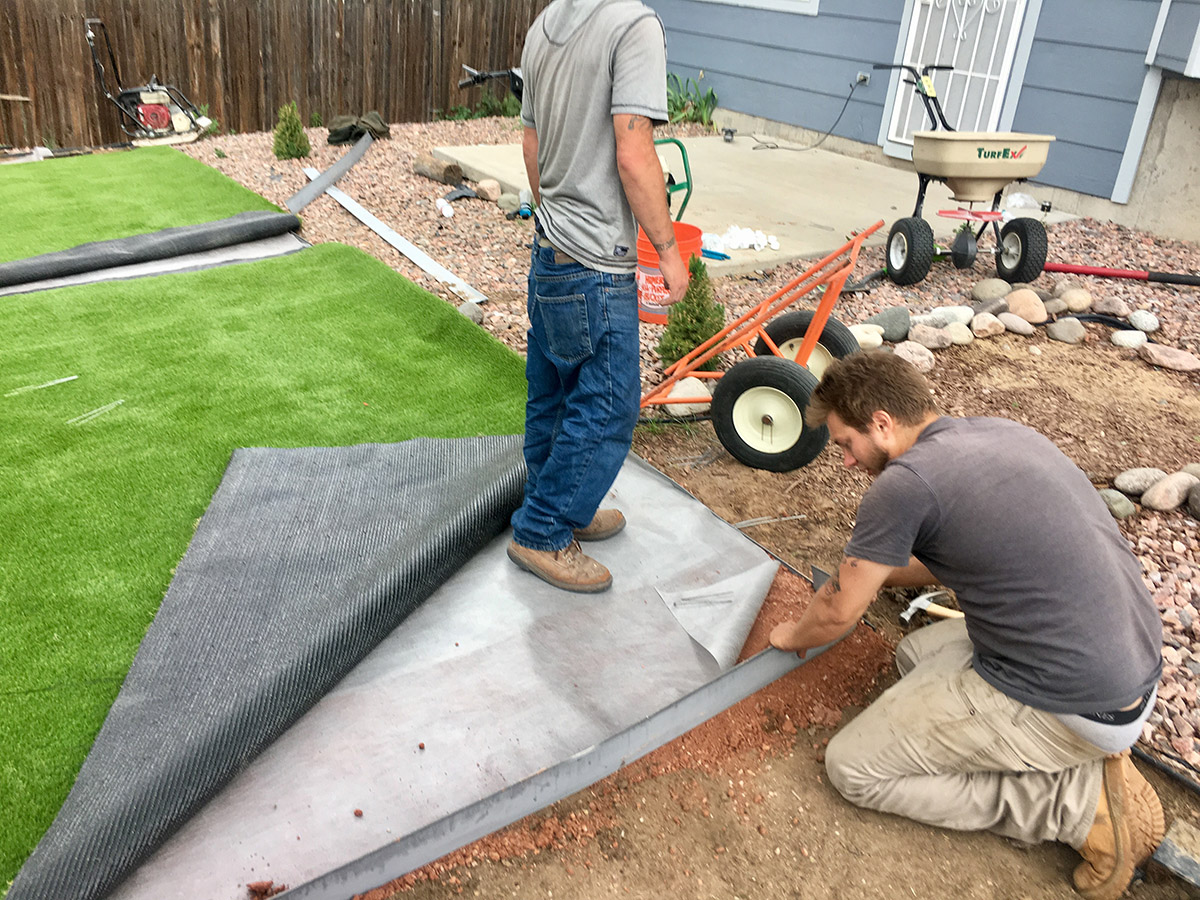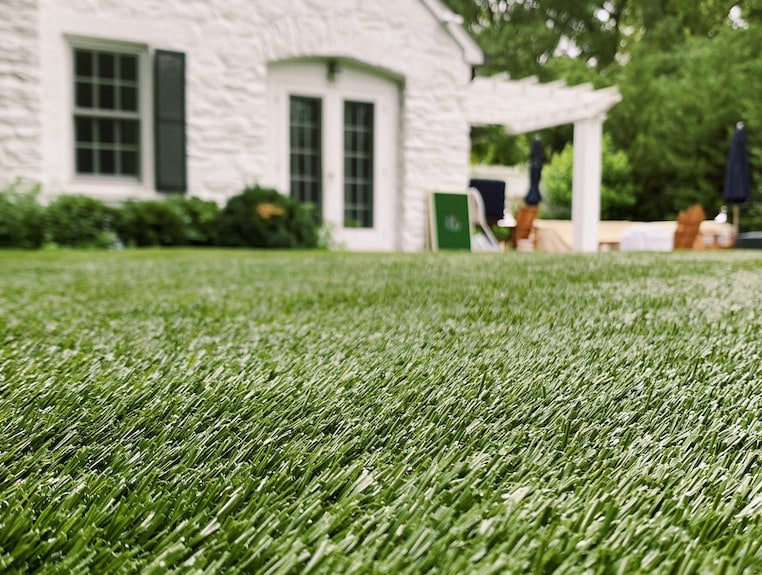High-Quality Arizona Turf Installation Services for Residences and Commercial Properties
High-Quality Arizona Turf Installation Services for Residences and Commercial Properties
Blog Article
Delve Into the Environmental Benefits of Opting for Synthetic Grass Solutions
The fostering of man-made turf options presents a compelling possibility to address pushing environmental difficulties. By considerably minimizing water usage and minimizing the application of harmful chemicals, these choices not just promote lasting landscaping however additionally safeguard local ecological communities.
Water Preservation Conveniences
One of the most significant advantages of synthetic turf is its capacity to save water. In comparison, man-made turf does not require watering, significantly lowering the overall need for water sources.
By eliminating the requirement for routine watering, synthetic grass adds to lasting landscape techniques and helps mitigate the ecological influence of extreme water consumption. Additionally, the preservation of water encompasses the reduction of runoff, which can cause soil disintegration and waterway air pollution.
Furthermore, the setup of fabricated grass enables property owners and communities to allot water sources more efficiently, concentrating on essential usages such as drinking water and agriculture. The change in the direction of synthetic grass not just advertises responsible water use but additionally straightens with more comprehensive environmental objectives focused on protecting natural deposits.
As areas progressively focus on sustainability, the water conservation advantages of synthetic lawn provide a compelling case for its adoption in industrial and household landscaping tasks.
Lowered Chemical Use
The shift to synthetic grass significantly decreases the dependence on chemical treatments commonly made use of in natural turf maintenance. Conventional grass monitoring normally entails the application of fertilizers, chemicals, and herbicides to advertise growth and control pests. These chemicals can position dangers to human health, local wildlife, and the atmosphere, adding to dirt and water contamination.
On the other hand, synthetic grass eliminates the requirement for these harmful materials. When set up, it requires minimal upkeep, largely being composed of normal cleaning and seldom infill replenishment. This decrease in chemical use not just profits the immediate environment yet also contributes to more comprehensive ecological stability. By lessening the release of artificial compounds right into the ecosystem, artificial turf promotes much healthier soil and water supply.
Additionally, the lack of chemical overflow connected with synthetic grass installations helps shield local rivers from air pollution, sustaining marine life and keeping biodiversity. Arizona turf. As neighborhoods progressively prioritize sustainable methods, going with fabricated lawn offers a practical solution that aligns with ecological preservation objectives. Via this shift, property proprietors can enjoy rich eco-friendly spaces without jeopardizing environmental health, leading the means for a much more lasting future
Lower Carbon Footprint

In addition, the installation of synthetic grass can cause significant water conservation. Natural yards need considerable amounts of water for irrigation, which not only contributes to the carbon footprint connected with water extraction and treatment however also strains local water sources. In comparison, artificial turf requires marginal upkeep, calling click here to find out more for no watering, thus substantially decreasing water use and its associated power prices.
Additionally, the durability of man-made grass contributes to its decreased carbon impact. With a life-span of as much as 15 years or more, the demand for constant replacements is diminished, resulting in much less waste and reduced power intake in production and throwing away standard lawn choices. Generally, fabricated turf presents a lasting alternative for eco aware landscape design.
Habitat Conservation
Habitat preservation is a crucial factor to consider in the discussion over landscaping choices, especially when contrasting fabricated turf to natural yard. Natural turf yards typically require extensive upkeep, including making use of herbicides, plant foods, and pesticides, which can negatively influence regional communities. These chemicals can seep right into the soil and rivers, damaging indigenous vegetation and fauna and interfering with regional environments.
On the other hand, artificial grass presents a chance to lower the ecological impact of landscape design. By opting for synthetic grass, property owners can decrease the interruption of natural habitats linked with traditional yard care practices. Synthetic grass gets rid of the demand for damaging chemicals, thus safeguarding nearby wild animals and preserving the integrity of surrounding communities. Moreover, the installation of synthetic grass can lead to the conversion of former grass areas into more biodiverse landscapes, such as pollinator gardens or indigenous plant locations, which can support regional wild animals.
Inevitably, the change to synthetic grass not only preserves water and minimizes upkeep initiatives but likewise fosters a much more unified partnership in between human tasks and the natural surroundings, advertising environment conservation in the procedure.
Long-Term Sustainability
Lasting sustainability is a crucial consider evaluating the advantages of synthetic grass over typical grass yards. One of the most significant advantages of man-made turf is its toughness; it can last up to 15-20 years with marginal upkeep, whereas natural grass calls for constant reseeding and substitute. This durability lowers the requirement for constant resources, such as water, plant foods, and pesticides, which are important for maintaining a healthy and balanced grass yard.
In addition, fabricated lawn adds to a decrease in carbon emissions connected with yard treatment tools. Typical lawns typically need gas-powered mowers, leaners, and blowers, all of which add to air contamination. Artificial turf companies phoenix. In contrast, synthetic grass eliminates the need for such devices, promoting a cleaner setting
Furthermore, the production of synthetic grass progressively makes use of recycled products, enhancing its sustainability account. As manufacturers take on eco-friendly techniques, the environmental footprint of synthetic lawn remains to reduce.

Conclusion
The adoption of man-made turf services provides substantial environmental benefits, consisting of substantial water preservation, minimized reliance on harmful have a peek at these guys chemicals, and a reduced carbon impact. In addition, synthetic grass help in protecting all-natural environments by lessening land disturbance and advertising lasting sustainability with using resilient products. Jointly, these aspects see this here underscore the possibility of synthetic lawn to contribute favorably to ecological health and offer a viable option to conventional landscaping practices in a significantly resource-conscious world.
In comparison, synthetic lawn does not require watering, significantly decreasing the general need for water resources. By reducing the launch of artificial compounds into the community, fabricated turf advertises healthier dirt and water systems.
Additionally, the installment of synthetic lawn can result in significant water conservation. In contrast, synthetic turf needs minimal upkeep, needing no watering, thus significantly reducing water usage and its connected power expenses.

Report this page